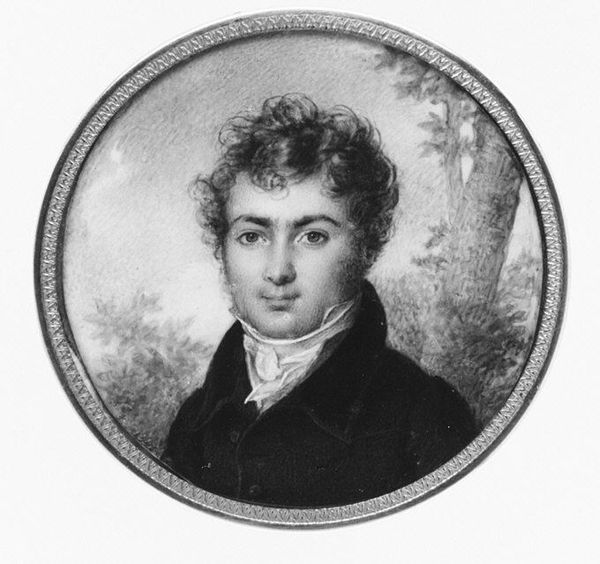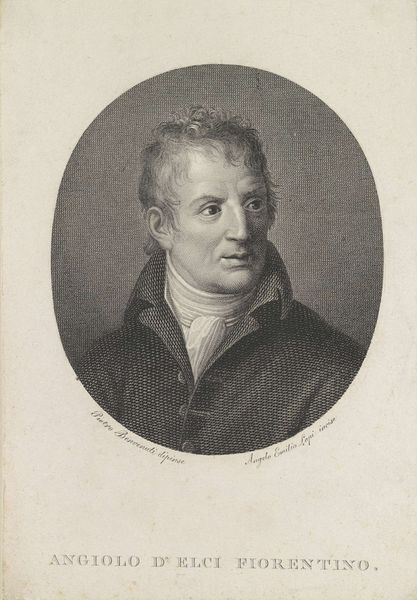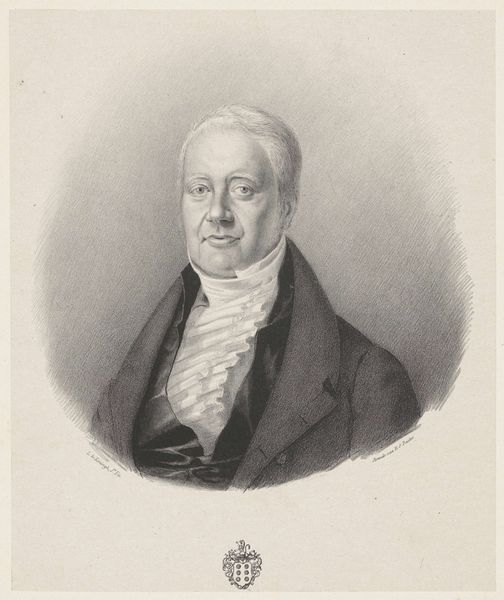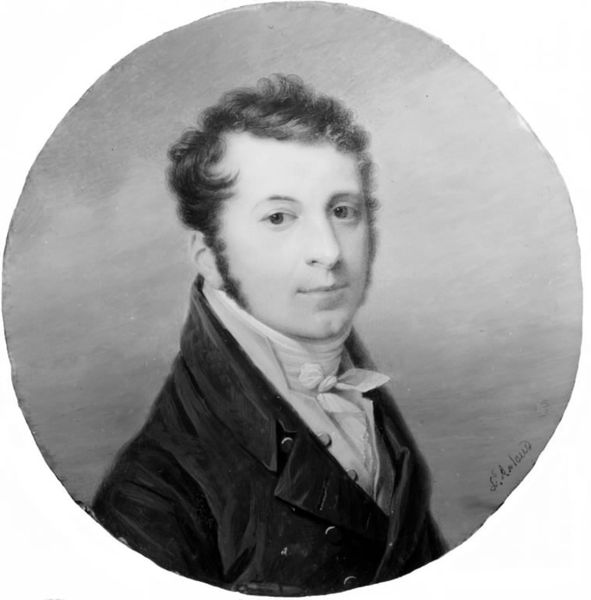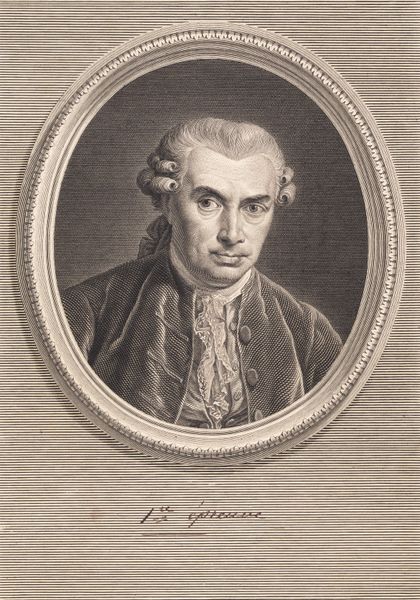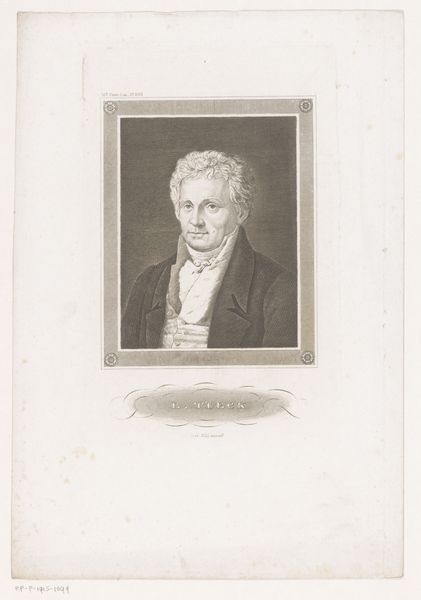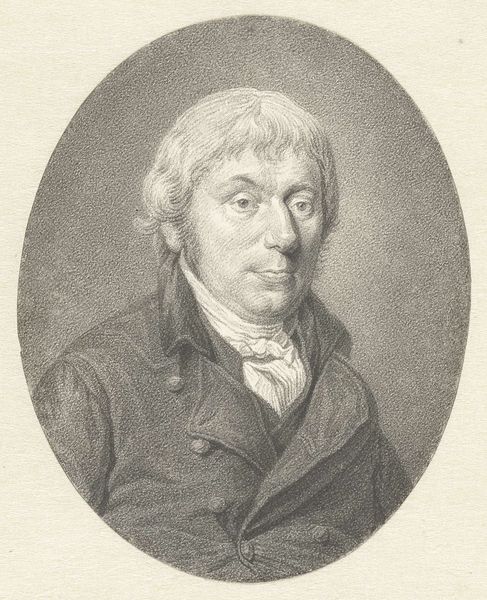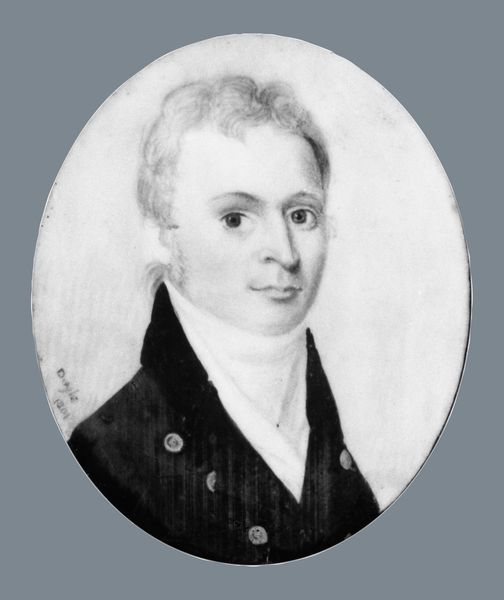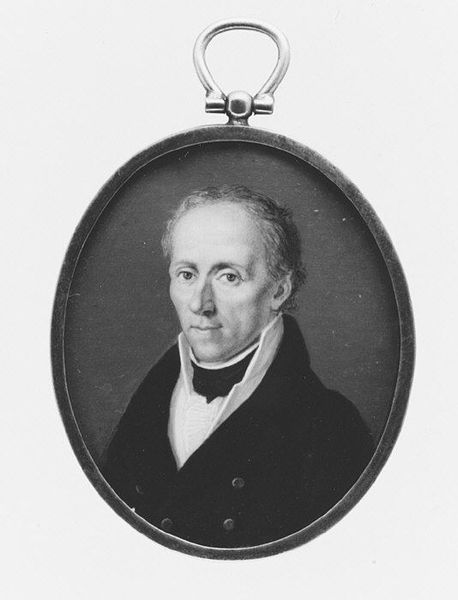
Portrait of a Man, Said to Be Alexander von Humboldt (1769–1859) 1810 - 1820
0:00
0:00
drawing, pencil
#
portrait
#
drawing
#
neoclacissism
#
pencil
Dimensions: Oval, 2 1/2 x 2 in. (64 x 52 mm)
Copyright: Public Domain
Curator: This is an intimate pencil drawing, believed to be a "Portrait of a Man, Said to Be Alexander von Humboldt," created anonymously sometime between 1810 and 1820. Editor: There’s a stern, almost forbidding quality to his gaze, don't you think? It is framed in what appears to be silver with incredible detailing. It's a compelling introduction to the man's essence, particularly if this is Humboldt. Curator: Indeed. It's held within an oval frame, emphasizing a kind of containment—relevant, perhaps, given Humboldt’s influential role in shaping scientific thought during a time when science was being carefully codified by powerful institutions. Editor: You are so right, that the careful composition speaks volumes about societal expectations placed upon figures like him. The restrained color palette too emphasizes formality. He's depicted, as was customary for that era, as powerful and collected, masking anything deeper. Who has the power to dictate how society gets depicted? How has the control of depiction shifted? Curator: Power and image-making were intimately intertwined back then and still are today. Neoclassical aesthetics favored restraint, and the portrait serves a specific social function. I do find it interesting, if this really is Humboldt, how the scientific spirit gets translated, not into a scene of discovery, but instead a composition of static respectability. Editor: It underscores how dominant ideologies permeate even portraiture. How expectations influence the subject of who has permission and resources to look in their portrait. What does portraiture accomplish? We are only told "Said to Be Alexander Von Humboldt" so it creates layers of potential identities to consider. The frame then, isn't just decorative, but acts almost like a restrictive social construct in itself, shaping how we engage with the sitter. Is it even a candid or performative portrayal of who is "Alexander Von Humboldt"? It demands questions around its artistic choices to further shape identities for its audiences, depending on gender and ethnicity in that day and age. Curator: I agree, the qualifiers add complexity. So much of art history depends on who gets named and who remains anonymous and therefore "othered." Editor: It reveals the social forces at play behind a simple image. It makes you realize we cannot view him without reflecting our role and biases in it as well. Thank you. Curator: Absolutely, food for thought.
Comments
No comments
Be the first to comment and join the conversation on the ultimate creative platform.
